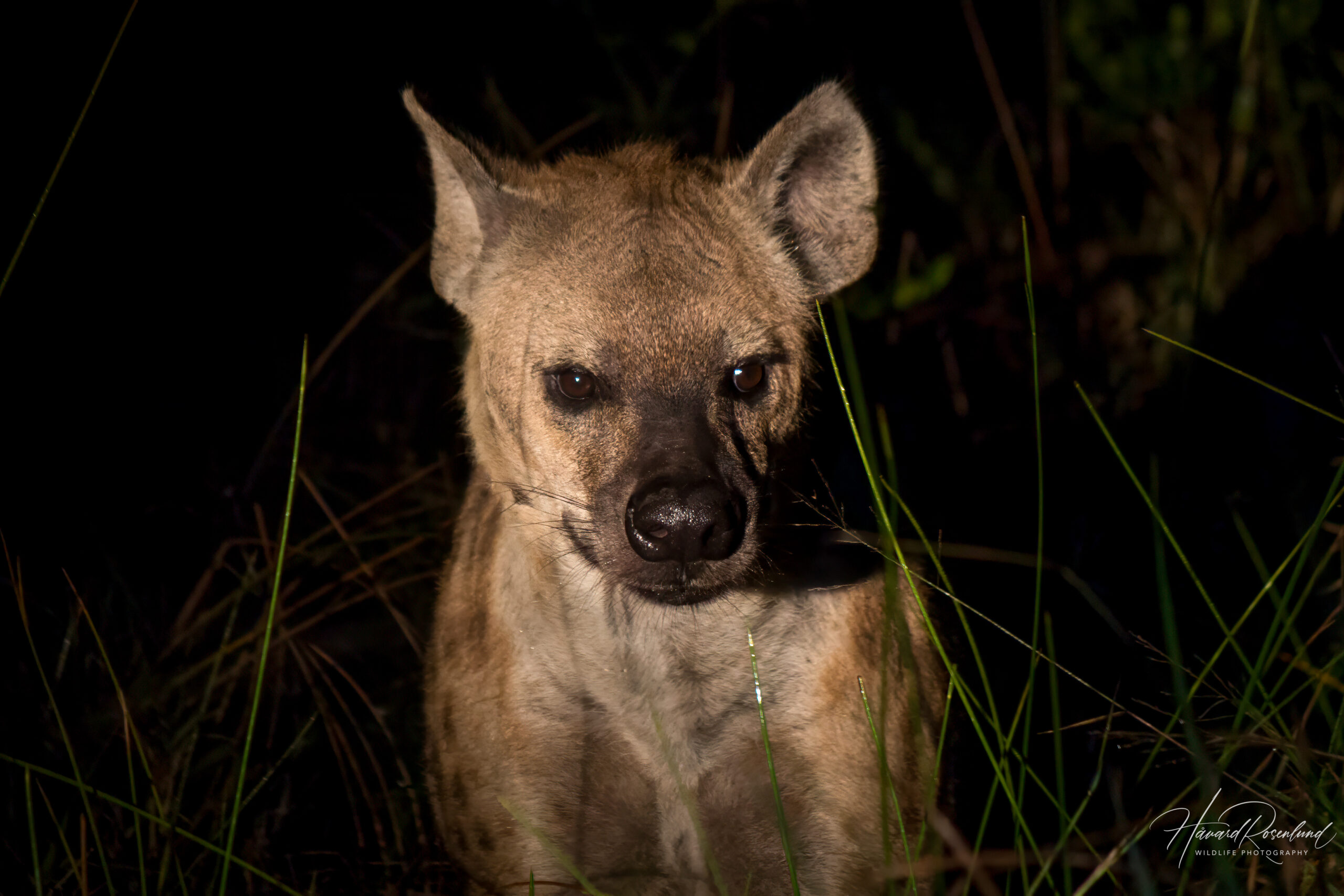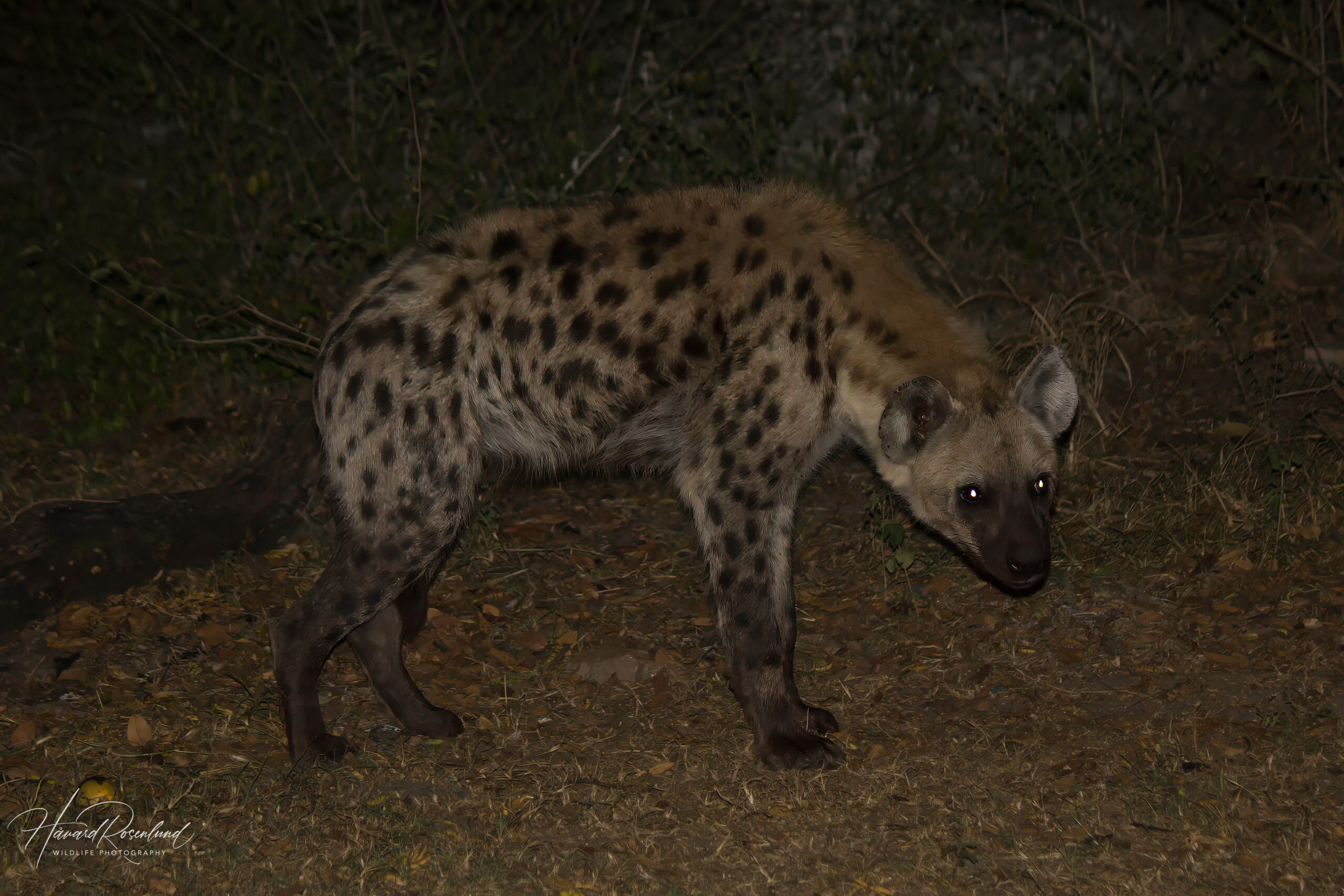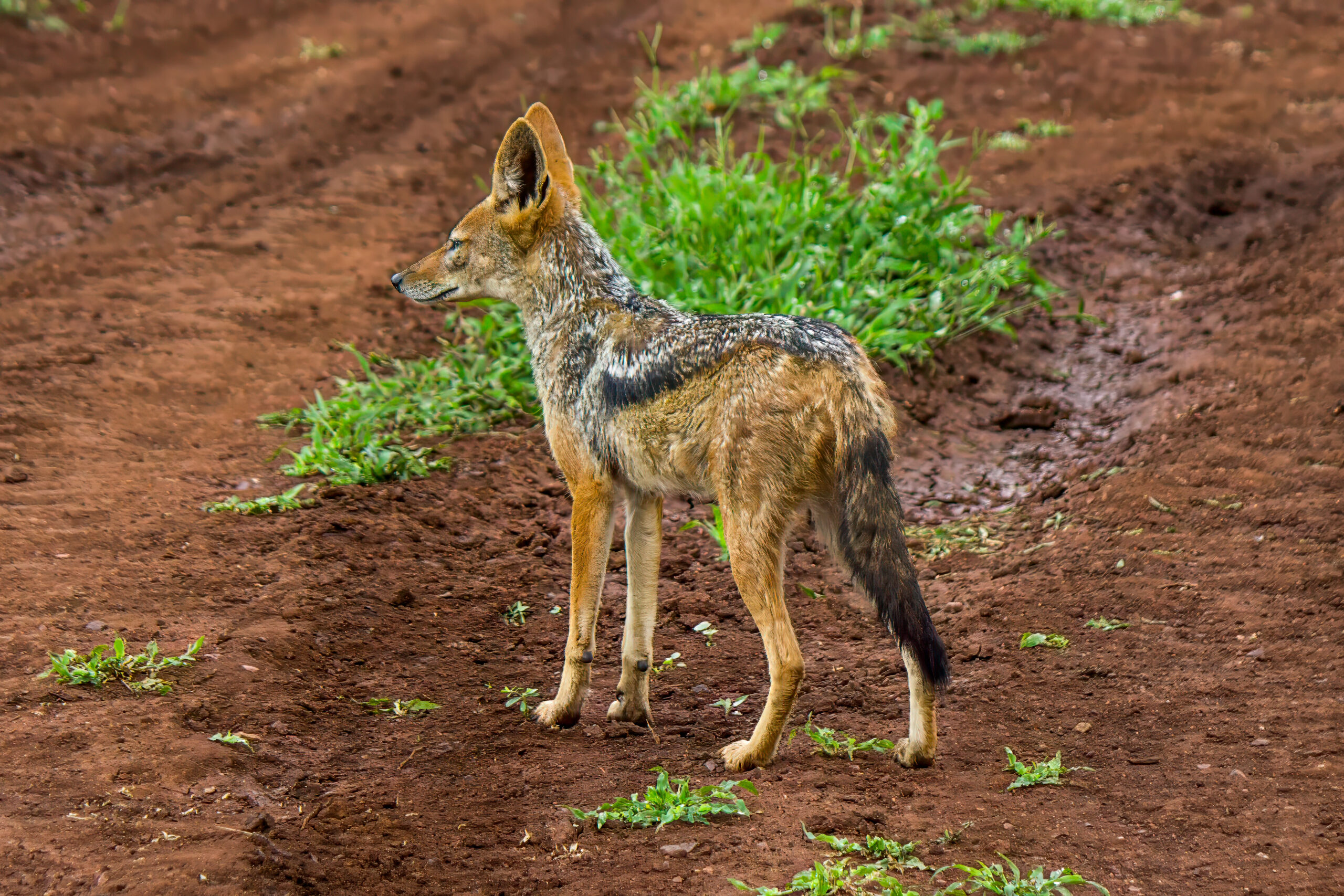Description
The spotted hyena (Crocuta crocuta) is the largest species of hyena. It is characterized by its spotted coat, big round ears and unusual posture compared to other carnivores. Though seemingly doglike, hyenas are actually more related to cats. Spotted hyenas can reach a shoulder height of 91.5 cm (36 in) and weights up towards 80 kg (176 lb), though 65-70 kg (143-154 lb.) is more common. Females are typically larger than males. Spotted hyenas are unusual among mammals with the fact that females do not have vaginal openings, but instead have a penis-like appendage called a pseudo-penis. Male spotted hyenas, however, have normal penises. It is therefore often difficult to tell the sexes apart.
Social behavior
Spotted hyena is the only social species of hyena and lives in large groups called clans. All hyena clans use some form of den for shelter and protection for young. This is often abandoned burrows made by other animals, but sometimes adequate rock formations are used as well. Clans can stay at one den for longer periods or move between den sites more regularly. Group sizes differ with habitat and prey availability and will increase when prey is regularly abundant. Groups of up to 80 individuals have been recorded.
Females are dominant in clans, and the lowest-ranking female will be above the highest-ranking male. When a high-ranking female gives birth to a female cub, the cub will automatically be of a higher ranking than any females ranked lower than the mother. Females only care for their own young, and if a mother is absent, lower-ranking females will act aggressively towards the higher-ranked cub. Males do not care for young and young males disperse from their natal group aged at about two and a half years. Females generally remain in their natal group throughout their lives.
Spotted hyena social structure is the most complex seen in large carnivores and is similar to that of several primate groups, such as baboons and vervet monkeys. Individual spotted hyenas will know which other clan-members are reliable and trustworthy. They can also recognize relationships between other individuals. Spotted hyenas will use knowledge gathered on other clan-members when making decisions. Another similarity with primates is that dominance is not based on size and aggression but on networks of allies within the clan.
Clan home ranges vary and is dependent on resource availability. In the densely populated Ngorongoro Crater in Tanzania, spotted hyenas have a home range of 40 km² while in the more barren Kalahari, where resources are scarce, home ranges can reach up to 1,000 km². Clans will periodically patrol their boundaries, scent mark, and voice their presence through calls. Neighboring clans will normally respect each other’s home range, and spotted hyenas have been known to stop chasing a prey when it crosses into a neighboring territory. When in times of fewer resources, boundaries may often be ignored. Males are more prone to cross into another territory than females because they often leave their natal group in search for mates. Single individuals can gradually be taken into a new clan if that individual is persistent enough. When clans meet, they can act quite hostile towards each other. Violent fights might break loose and severe injuries and deaths do sometimes occur.
Here’s a video of a spotted hyena at night. They often split up into smaller groups or wander off alone to forage and investigate, like this individual:
Reproduction
A male hyena will often approach a female in heat carefully and will throughout the courtship display submissive behavior. A female will often prefer to mate with males that are either young or new clan members. Older females will also choose males they have formed bonds with. Aggressive males are rarely successful at mating as the bigger and stronger females will deny them. For spotted hyenas the act of mating is quite complicated as the male would have to insert his penis into the similarly narrow female pseudo-penis.
After an average gestation period of 110 days a female will most often give birth to two cubs. It is by many regarded as one of the most painful births found among mammals as the cubs are born through the pseudo-penis. It does not help that spotted hyena cubs are the largest carnivore cubs relative to the size of the mother when born. The end of the pseudo-penis will rupture upon giving birth and it will take several weeks for it to heal.
Newborn cubs are all dark brown and it will take them 2-3 months before their coat becomes more like adults. When two cubs born are of the same sex it is not uncommon for the strongest cub to kill the weaker sibling. Spotted hyena cubs grow up fast and within a year they actively participate in hunts with the clan. Both sexes reach sexual maturity after three years and can live to become an average of 12 years, though 25 has been recorded in captivity.
Hunting & competition
Spotted hyenas are known by many to be scavengers, but in truth they are great hunters. In many places where both spotted hyena and lion coexist, both species have been found to hunt prey just as frequently. While spotted hyenas do sometimes try to steal meat from other predators, lions have been known to do the same and sometimes even more so than the spotted hyena. A clan of spotted hyena prefers to hunt medium to large-sized herbivores such as wildebeest, zebra, and kudu. Spotted hyena directly competes with lion, as they both prefer the same habitat and prey species, and they are often seen as mortal enemies. The two species will often try to avoid each other, but sometimes conflicts arise, and brutal fights are not uncommon.
Below is a dramatic video of six spotted hyenas fighting one lioness in Hluhluwe-iMfolozi Park back in 2013. It is perhaps the most exciting wildlife observation I have had to date and I was trembling throughout the entire event. The lioness survived, but almost lost her tail. A second lioness eventually came to help, but they lost the buffalo kill they were fighting for.
Status
Spotted hyena used to be common throughout most of Africa and Eurasia. Fossils have been found in the Russian Far East as well as in Western Europe. It is believed to have first evolved in Asia. The spotted hyena disappeared from areas outside of Africa 14,000-11,000 years ago. Today it is widespread in sub-Saharan Africa. Although numbers are declining outside of protected areas due to habitat loss and poaching, especially in western, central and eastern Africa, the spotted hyena population is deemed stable and the species is listed as least concern on the IUCN Red List. In some countries, like Eritrea and Chad, numbers have been increasing. There are thought to be between 27,000-47,000 individuals in the wild.














